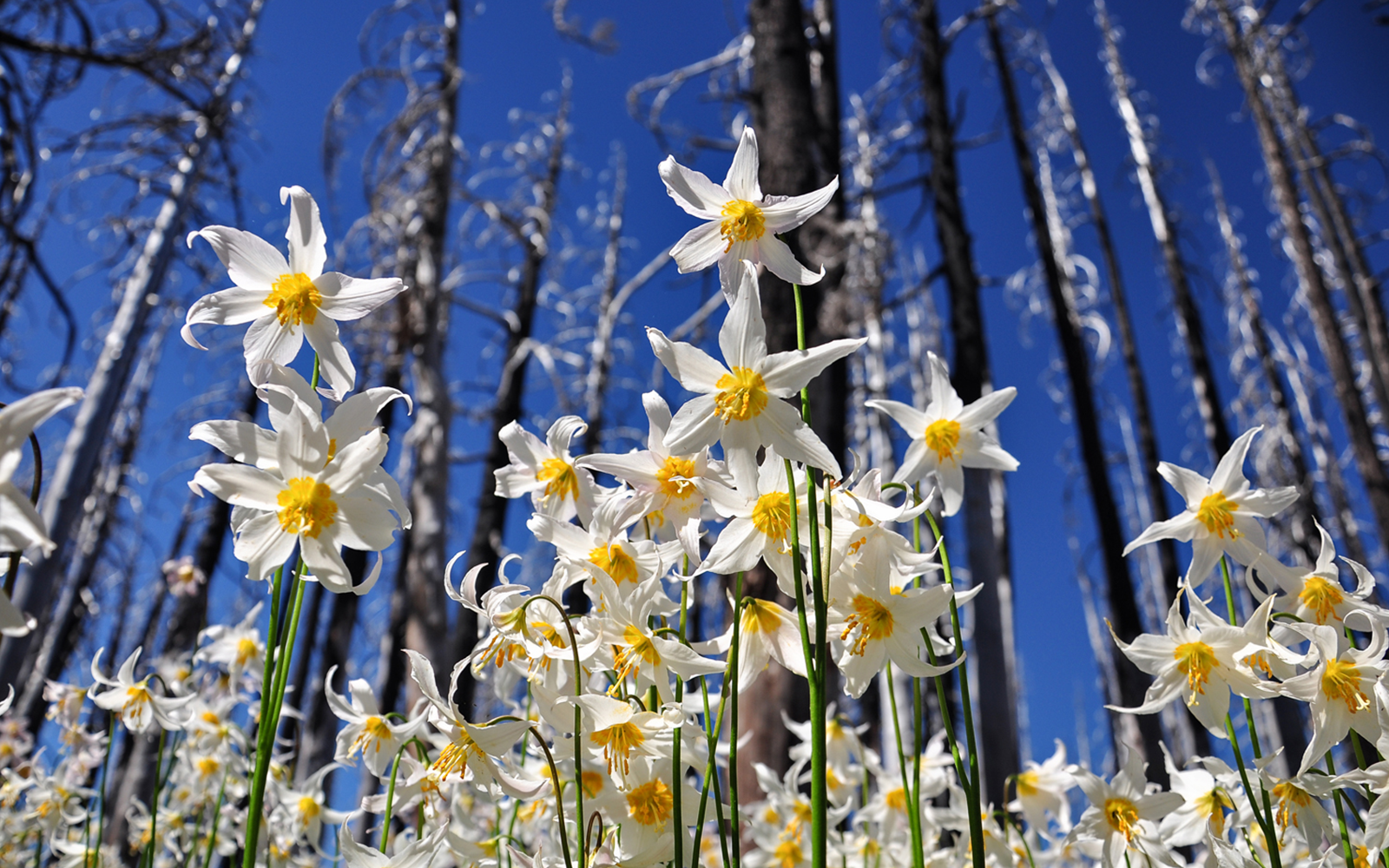by Rebecca White, Wildlands Director
As we move into the post-wildfire season here in western Oregon, I am thinking of having some bumper stickers printed up. Maybe, “Gaia Knows Best.” Or perhaps, “What Would Gaia Do?”
In the aftermath of this year’s big fires, I want to share the idea that when the land has suffered what may appear to be a major wound, sometimes the picture is brighter than it first seems—especially when we are willing to trust natural processes and give the land some room to heal.
It’s nevertheless true that major wounds lie all around us this winter. Large wildfires, many that were likely sparked by power lines then driven to conflagration by unusually hot and dry east winds, have caused tragic loss: some in our communities have lost their homes and businesses; some lost their lives. We mourn those lives, and extend our compassion and support to those who lost homes and livelihoods. Tough times lie ahead as people make plans for a different future than they might have hoped and planned for.
We have also heard people’s fears and concerns about the wild lives lost. Will our forests recover? Is destructive wildfire going to become our “new normal” under climate change? Will big fires in spotted owl habitat drive them to extinction?
I am happy to tell you that, at least as far as the forests go, you can breathe a sigh of relief. Our Western Oregon forests and native wildlife are used to wildfire. They’ve evolved with it, and a fully functioning ecosystem needs it.
As to whether large wildfires will become the “new normal” under climate change, the truth is that large wildfires are just … normal. In recent decades, we’ve emerged from an unusually wet time period that coincided with federal policy encouraging fire suppression, so our expectations of a normal fire year are based on an abnormal baseline. Large wildfires – even so called “mega-fires” – are the historic norm west of the Cascades. We may start to see increased drought and extreme weather due to climate change, though, and that will certainly influence fire behavior in years to come.
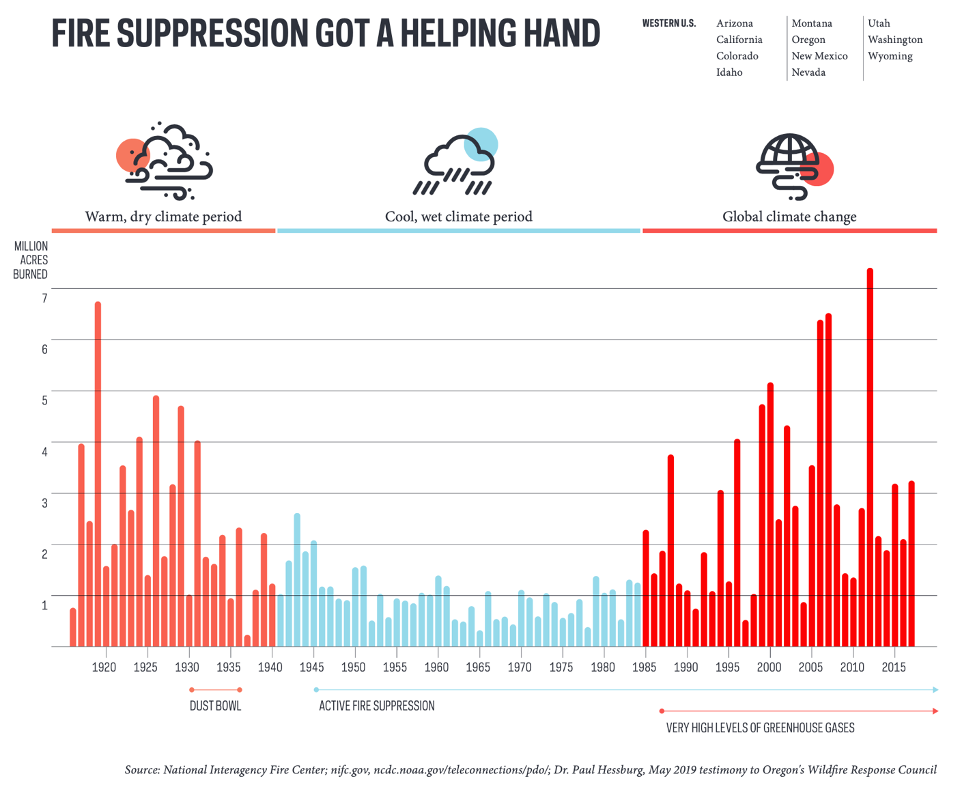
If you’ve been wondering whether our forests can recover from the fires, you can set your mind at ease about this, too. Very large, and often severe wildfires have burned in our forests for thousands of years. Our forests and the wildlife within them evolved in concert with fire and not only recover in its aftermath, but thrive. Even this season’s biggest fires burned in a mosaic, leaving a patchwork of green forest, untouched or lightly burned, intermingled with more severely burned patches.
If left to recover naturally, these blackened patches of charcoal forest will start to sprout new growth next spring, birds and their nestlings will feast on insects that have colonized the burned trees, and tree seeds will sprout, nourished by the living mycorrhizal network beneath the burned soil surface. Fire, our forests can handle.
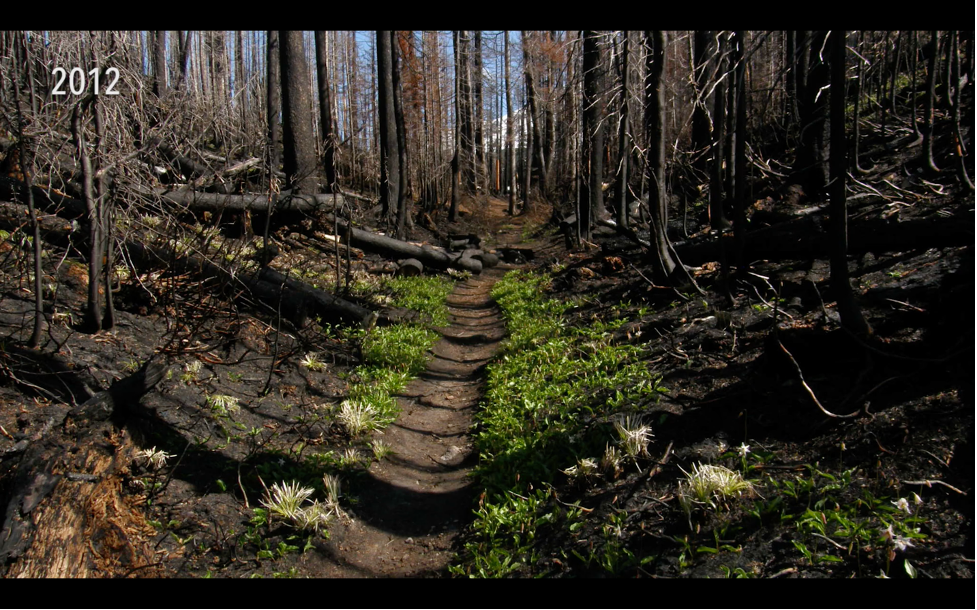
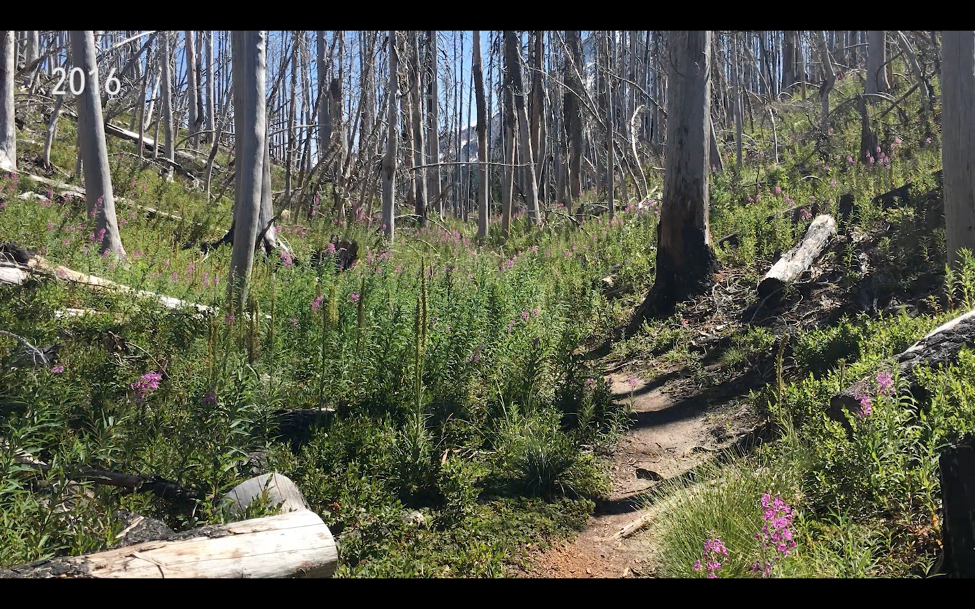
Now, whether our forests, and the wildlife that depend on them, will recover from decades of destructive logging is another question – and that’s why we fight tooth and claw against any old-growth and mature forest logging, as well as the particularly destructive post-fire clearcutting.
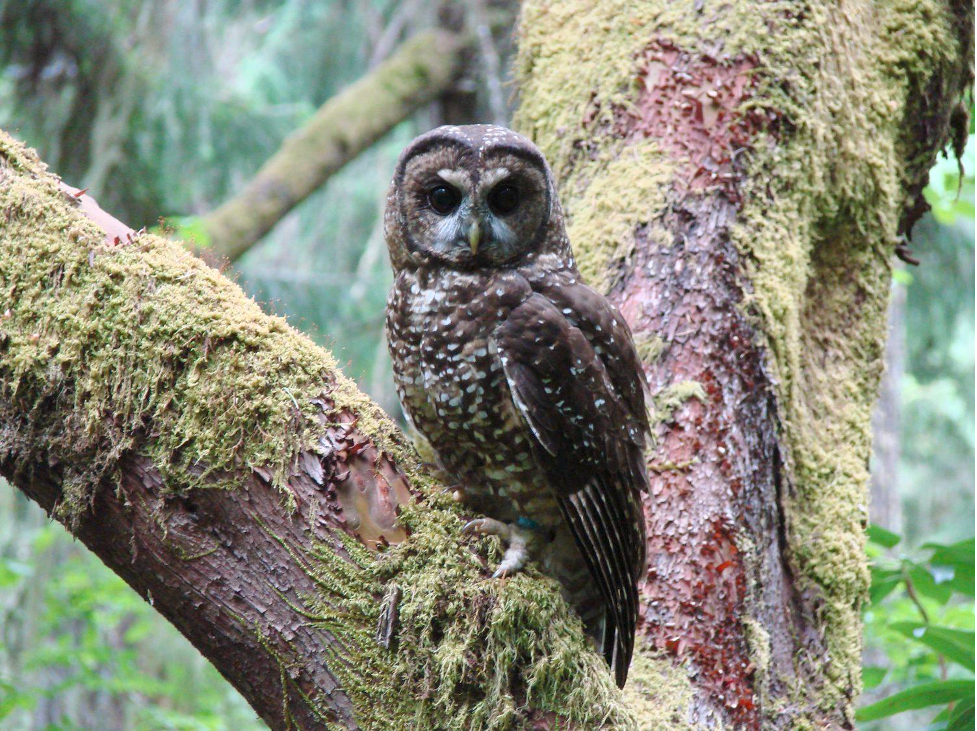
There is also some good news on the spotted owl front with regard to wildfire. An ongoing scientific debate about the fate of spotted owls after wildfire has flared back up recently. The upshot of the controversy is that an independent scientist has shown that spotted owls thrive through wildfires, while a group of industry and agency-sponsored scientists have been trying to cast doubt on that. There’s going to be some back-and-forth for a while, but it looks like the debate will come down in favor of the rigorous, independent scientists, as it usually does. I’m ready to breathe a sigh of relief here: I don’t think wildfires, alone, are going to drive spotted owls extinct.
Yet the owl population has been declining steadily since they were listed under the Endangered Species Act in 1990, so much so that the US Fish & Wildlife Service has determined they should be uplisted from “threatened” to “endangered,” meaning they are now in danger of extinction (note, the listing is not finalized; the government has determined they are too busy to handle it just now, but will revisit the idea in a year). So, what is sending spotted owls down the extinction spiral?
In a word, logging. Despite the frantic efforts of the industry and, unfortunately, most of our federal land managers, to blame a myriad of other causes, the main culprit is logging.
When an industry strips away a habitat needed for a species’ survival – and for spotted owls, that’s old-growth forest – then that species will die off. Estimates vary on the amount of old-growth the industry has deigned to leave behind in spotted owl range, but it could be as low as 10% of what existed prior to colonial settlement in the 1800s. It’s not too surprising that spotted owl populations are way down, too. Species and their habitats go hand in hand; when their homes go, they go.
Post-fire clearcutting is the worst of the worst. By logging a burned forest, land managers interrupt the life cycle of the ecosystem when it is at its most vulnerable. Soil is usually exposed after a fire, and any disturbance – such as the excessive miles of new roads being proposed for logging access – increases landslide risk and loss of valuable forest topsoil, often into streams where it degrades fish habitat.
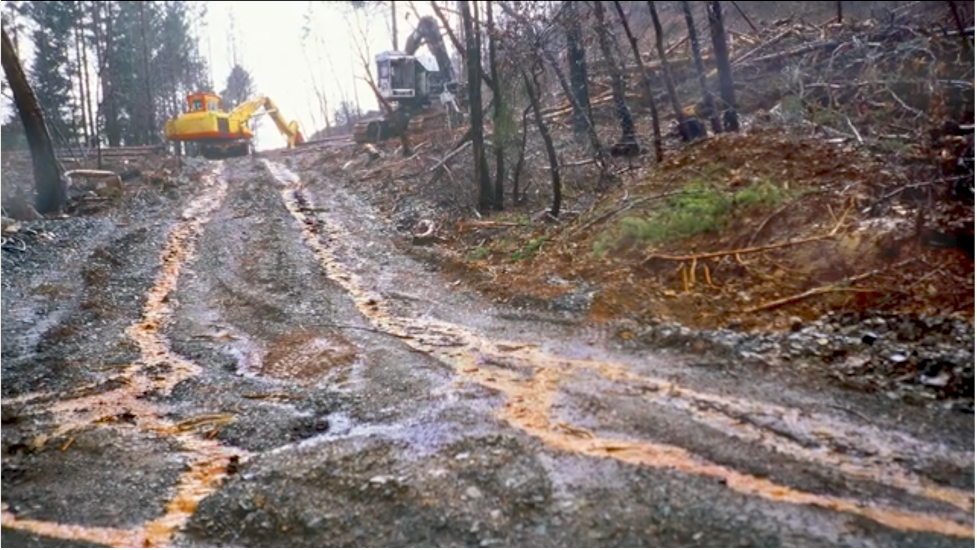
If they aren’t logged, we can expect to hear plentiful birdsong and enjoy native wildflower blooms in our burned forests this spring. Forests that develop on their own post-fire are more complex than clearcut-and-replanted stands; they can develop into old-growth twice as fast as managed forests. On top of that, many are surprised to hear that burned forests are great at storing carbon. But not if they’re logged.
Owls – and any other living thing that prefers to live in a forest (even a burned one) versus a strip-mined hellscape – are among the reasons we are particularly concerned by new post-fire clearcutting proposals coming hot in the wake of this season’s wildfires. We are geared up on all fronts with our conservation partners to fight this, the worst and most environmentally destructive form of logging.
Because industrial timberlands will flood the market with burned logs from private lands, we are asking our state and federal agencies to take a more responsible role with our shared forests and leave them to recover naturally, providing diverse habitat for a myriad of wild species.
Although we’d hoped the agencies might have the decency to wait until the pandemic eased, the holidays had passed, and 2020 was finally in the rear view mirror before acting, they’ve unfortunately decided to start pitching post-fire clearcutting in some of our most cherished watersheds this month. We are keeping an eye on three massive, harmful projects now (outlined below). We know more will be headed our way in the months to come, and we will keep you all apprised of opportunities to weigh in.
McKenzie River / HLB-MITA Salvage Project
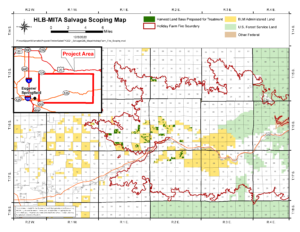
This proposal out of the Bureau of Land Management proposes to clearcut over 1,300 acres of burned forest in the McKenzie River watershed (salvage and green tree harvest within Harvest Land Base-Moderate Intensity Timber Area (HLB-MITA). We’d like to see the agency operate with some concern for the trauma already suffered by the human and wild residents of the McKenzie valley. Clearcutting these hillsides would instead add increased landslide risk and risk to fish streams, degraded soil webs, flash floods, and homeless wildlife to the list of insults following the Holiday Farm Fire.
The agency is taking comments on its scoping proposal now through January 11. They are asking whether they should do a full Environmental Analysis (EA) or if they can get away with filing this under a “Categorical Exclusion” – a new pass on environmental impact review granted for post-fire logging in the waning days of the Trump administration. We want them to slow down and take the time to do a full EA review as required by law, giving our citizens plenty of time to look over their plans and comment prior to them committing to undertake actions that would ravage our forest and watershed.
You can contact the field manager in charge, Rebecca Brooke, with your concerns: rbrooke@blm.gov
North Umpqua River / Archie Creek Salvage Project
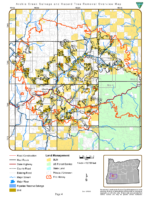
Here again, the Bureau of Land Management is moving lightning-fast on a proposal to clearcut a massive area along the North Umpqua River that burned in September’s Archie Creek Fire. We can’t even tell you exactly how many acres are involved, because their scoping proposal is so vague it doesn’t even list that basic information. So much for fair and open public oversight procedures. We do know this one is too big to go forward under a Categorical Exclusion, but we fully expect the agency to rush its Environmental Analysis.
We’ve asked for more information, but in the meantime, you can comment until January 8. If you support a careful environmental review that fully considers all the logging impacts to fish, streams, water quality, soil quality, and wildlife that we would expect, let the agency know!
You can reach out to Mike Korn, the field manager in charge: mkorn@blm.gov
North Santiam River / Santiam State Forest
This proposal is moving fast to sell off swaths of our burned state forest to clearcutting. About half of the roughly 47,000-acre Santiam State Forest east of Salem burned last fall. As with fires generally, this one burned in a healthy mosaic pattern, leaving fertile ground for a new, natural forest to arise there. Instead, the state is sticking to its outdated 2010 planning document and wants to clearcut up to 3,500 acres. We know some of what they will cut will be green, and as you know, even the blackened areas provide important habitat for years to come.
The Oregon Department of Forestry has provided very little information about what they intend here. We don’t know how old these trees are, how severely they burned, or where exactly the agency intends to allow loggers free rein. They’ve shortened the usual public comment period to 30 days – comments due December 23 – and have revealed they intend to auction off the first trees for logging that same day! We think our public trust deserves better.
You can ask for more information and share your opinion of this plan here:
odf.sfcomments@oregon.gov

